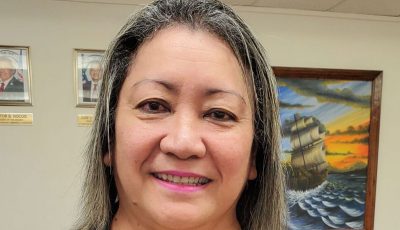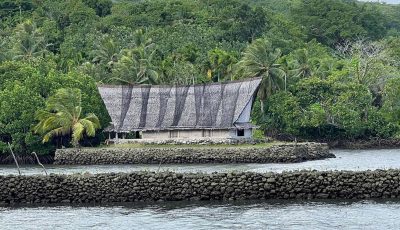Three girls by the pump
It was in the late ’70s on an island called Mactan off Cebu City in the Philippines. My family resided in the village of Sudtonggan, Lapu-Lapu City, named after the island warrior who taught Magellan to mind his own business.
We were part of a global staff that did not learn Magellan’s fatal lesson not to interfere with other peoples’ affair. We did. Intentional busybodies doing human development demo on every time zone as the Institute of Cultural Affairs, we were convinced that the cultural aspect in development preceded those of the economic and political, not in a hierarchical but in a chronological sense.
Like intruders in other places, the community treated gringos (I was the local color married to a pale-faced gringa) with great deference and built a staff house on the limestone field, only for it to be mysteriously torched in the middle of the night.
We moved to the training school grounds, hastily adding an extension. Two families on staff had daughters of the same age and the same first names. Trailing two years behind was my second daughter. They were three young innocent girls who were unselfconscious in shedding their loose island attire to cool off their tropical sun-heated bodies in the open water pump by the training school quad when the enclosed bathrooms were occupied.
The Sudtonggan village “identity” was dramatically made when our sleeping young children were left with only their cotton nighties to wear after the fire. The parents were leading a project replication at a consult in another village on the other side of the island. The children’s belongings burned but the villagers brought out their children’s Sunday best for our kids to wear. Their gesture grounded our lessons on public expenditure. Symbol is key and sharing their best is not explained in economic and political terms. It reflected a self-understanding of authentic sharing that came naturally.
The fire and its aftermath made dealing with the economic easier as the trust from villagers “that the foreigners knew what they were doing” was made manifest. Real dialogue was possible. Being of facilitative style, we enabled them to do what they already knew how to do, asking them what resources they had on hand. “We only have rocks” was the response.
They chopped rocks into blocks used under the house posts to keep the poles from rotting. They also fashioned corn grinders, mortars and pestles. We took a block of the rock to the local Rotary Club and an architect sliced it in his shop, finding it suitable as façade material for buildings and homes, and polished material for counter and tabletops.
The government forbade harvests of coral-limestone at the time. Corals were alive so it was a good ecological policy; the dead limestone embedded with dead coral became a substitute. New homes in Manila, Cebu and Davao’s gated communities built in the late ’70s and early ’80s had façades of Mactan stone, the rocks’ new market name. I found them in Guam and Saipan, and places that shipped containers to the Philippines that returned with not much load. An industry was born. Mactan came alive.
The village was 20 years on the schedule of municipal public service delivery. We got the stone workers to share a percentage of earnings so the village can purchase their fuel on a donated power generator to cut stones daytime and provide electric current to homes at night. We trained them to run their own social programs.
A village resident donated a piece of land for the Department of Education to build classrooms for the first three grades and assign teachers to staff them. A health clinic was established that had village mothers trained in hygiene and sanitation—kept the wells covered, did laundry at a distance to avoid well and water contamination. That led to hand pumps and bamboo pipes.
Unschooled girls staffed the health clinic, maintained records led by an unschooled mother; the village was ready for the regular rounds of the public nurse and doctor.
It lasted two years before individual villagers broke out to pursue their own private interest. Electricity short-circuited often as homes with TVs, cassette players, radios, and irons overloaded the 14 KVA system. Happily, it hastened the municipio’s metered consumption and grid connection.
The stone industry attracted buyers who paid workers in advance to assure inventory but skipped the percentage cut for the communal structures of health, education and welfare. A short-term view, but we worked with what was on the ground rather than impose values and objective goals until the village was ready to formulate them on their own. In the meantime, we ended the demo phase and left the village to their own devices.
The three girls by the pump now have families of their own, living in sophisticated suburban surroundings. None of them developed PTSD, nor do they spend sleepless nights from the “trauma” of the midnight fire. They just giggle when reminded that they bathed at the quad’s open water pump au naturel when they were young. Tee hee, their own children chime!



























